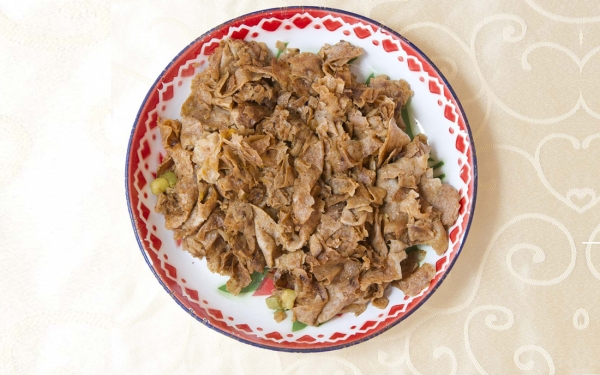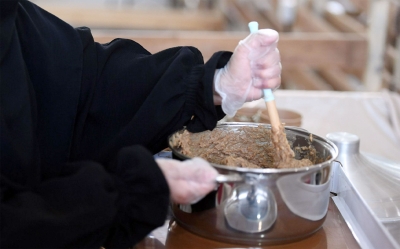
Al-Qursan is one of the popular dishes in the Kingdom of Saudi Arabia, with its preparation practices spreading across several Saudi regions. It can be easily found in national and heritage festivals, such as the Janadriyah National Heritage and Cultural Festival and the Klija Festival.
Al-Qursan is considered one of the popular Saudi dishes that are highlighted in events organized by the Kingdom abroad, particularly during Saudi Cultural Day events. These dishes reflect the cultural and social components of the Kingdom's governorates and provinces.
Al-Qursan cooking method
Al-Qursan is made by kneading brown whole wheat flour dough mixed with spices including onion, cumin, coriander, black seed, and cinnamon. The dough is left to rest for ten minutes, flipped once, and left for another ten minutes until it forms into balls. Next, the flattening process begins, and it is placed on a surface resembling a cushion, typically a piece of fiber covered with a cloth known as "al-Leefa". It adheres to the sides of the Tannour oven, and the cooking period, typically not exceeding two minutes, is determined by the oven's heat. Al-Qursan is then broken into medium-sized pieces, and the pre-prepared vegetable or meat broth is poured over it. It is covered for a few minutes before being served.
Development of al-Qursan production
The production of al-Qursan in various provinces and governorates of the Kingdom has undergone several stages. Previously, al-Qursan was baked in a traditional Tannour oven embedded in the ground, traditionally fueled by palm tree trunks, fronds, and stems. Subsequently, it transitioned to what is known as 'al-Hadeedah', relying on gas for ignition. Finally, it evolved into the electric 'al-Hadeedah' or the above-ground gas-ignited oven.
Related quizzes
Related articles


